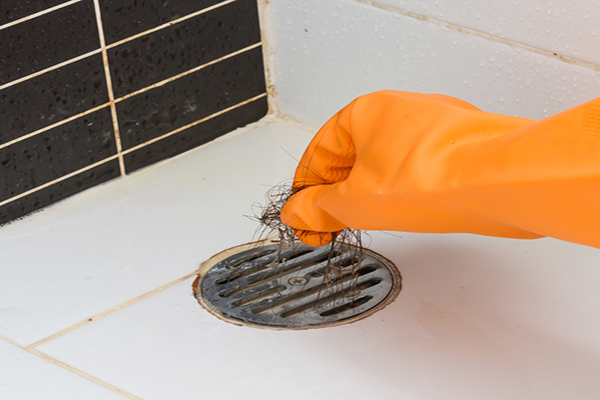Introduction:
A clogged shower drain is a familiar woe for many homeowners, often caused by the accumulation of hair over time. Not only does it lead to slow drainage, but it can also result in unpleasant odors and potential plumbing issues. In this detailed guide, we’ll walk you through practical steps to clear hair from your shower drain, ensuring a hassle-free and efficient drainage system. Let’s explore each step, along with additional insights and FAQs for a more thorough understanding.
I. Gather Necessary Tools and Materials:
Before embarking on your mission to unclog the drain, assemble the tools and materials needed for the task.
A drain snake or auger, a plunger, rubber gloves, a bucket or plastic bag, boiling water, and a combination of baking soda and vinegar are essential items to have on hand.
II. Remove Visible Hair:
Put on your rubber gloves and inspect the drain for any visible hair near the surface. Take the time to remove these hairs manually and dispose of them in a plastic bag or bin.
This initial step helps clear the surface and facilitates the effectiveness of subsequent methods.
III. Use a Plunger:
For a more hands-on approach, utilize a plunger to create a tight seal over the drain. Engage in rhythmic pushing and pulling motions to dislodge and push the hair clog further down the drain.
Repeat the process until the water flows smoothly, indicating a successful clearing of the clog.
IV. Boiling Water Method:
Boil water in a kettle or pot and carefully pour it down the drain in stages. The hot water helps dissolve and flush away hair clogs, providing a simple yet effective solution.
Be cautious with this method, especially if you have PVC pipes, as excessive heat could potentially damage them.
V. Baking Soda and Vinegar Solution:
Introduce a cup of baking soda followed by a cup of vinegar into the drain. This dynamic duo creates a chemical reaction that helps break down hair and other organic matter.
Allow the mixture to sit for at least 30 minutes before flushing the drain with hot water, providing a thorough clean.
VI. Implement a Drain Snake or Auger:
For more stubborn clogs, a drain snake or auger comes in handy. Insert the tool into the drain and carefully rotate and maneuver it to break up hair clogs. Pull out any debris caught on the snake, ensuring a comprehensive cleaning.
VII. Prevention Tips:
To prevent future hair clogs, consider using a hair catcher in the shower drain. These inexpensive devices trap hair before it enters the drain, significantly reducing the likelihood of blockages.
Additionally, make it a habit to clean the drain regularly, promoting optimal drainage and minimizing the need for extensive interventions.
FAQs:
Q1: Can I use chemical drain cleaners to remove hair clogs?
A1: While chemical drain cleaners can be effective, they may damage pipes and are not environmentally friendly. Mechanical methods like plungers and drain snakes are recommended.
Q2: How often should I clean my shower drain to prevent clogs?
A2: Cleaning the drain once a month is a good preventive measure to avoid hair build-up and maintain optimal drainage.
Q3: Are there any eco-friendly alternatives to chemical drain cleaners?
A3: Yes, the baking soda and vinegar solution mentioned in this guide is an eco-friendly alternative that can effectively break down hair clogs without harming the environment.
Conclusion:
By following these detailed steps and incorporating preventive measures, you can keep your shower drain clear of hair clogs. Regular maintenance is key to ensuring a smoothly flowing drain and a more enjoyable shower experience. Remember to tackle the issue promptly to avoid more severe plumbing problems down the line. With these practical tips, you’ll be equipped to handle hair clogs efficiently and maintain a healthy plumbing system in your home.

A group of home improvement enthusiasts and bathroom design experts, combines in-depth knowledge and a shared passion to deliver engaging, informative content that guides readers through the world of bathroom innovation and style.

Leave a Reply